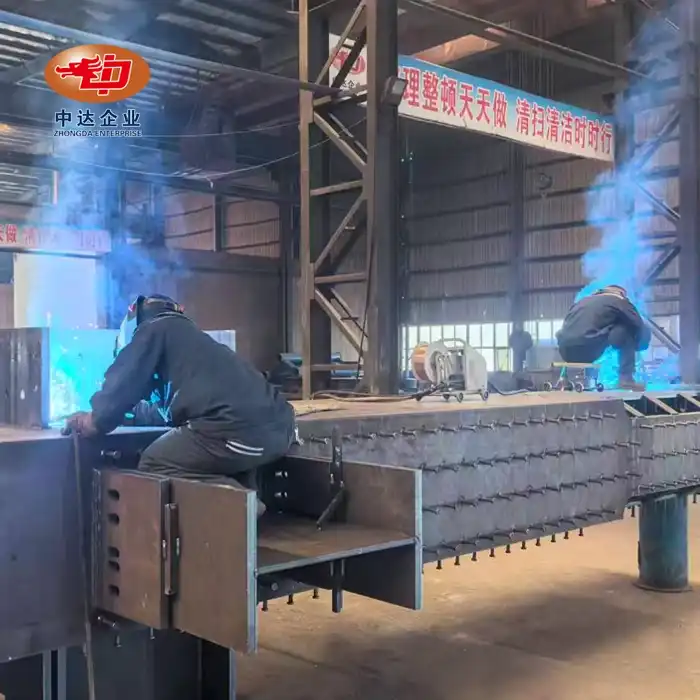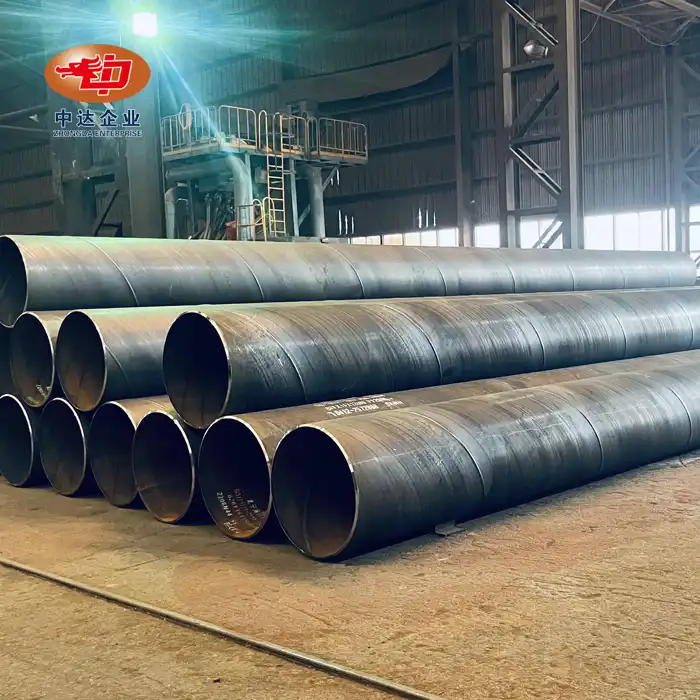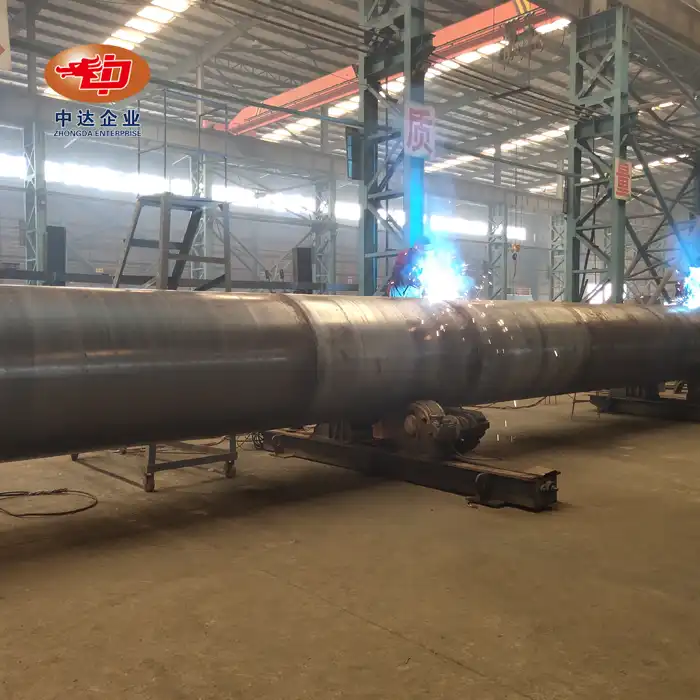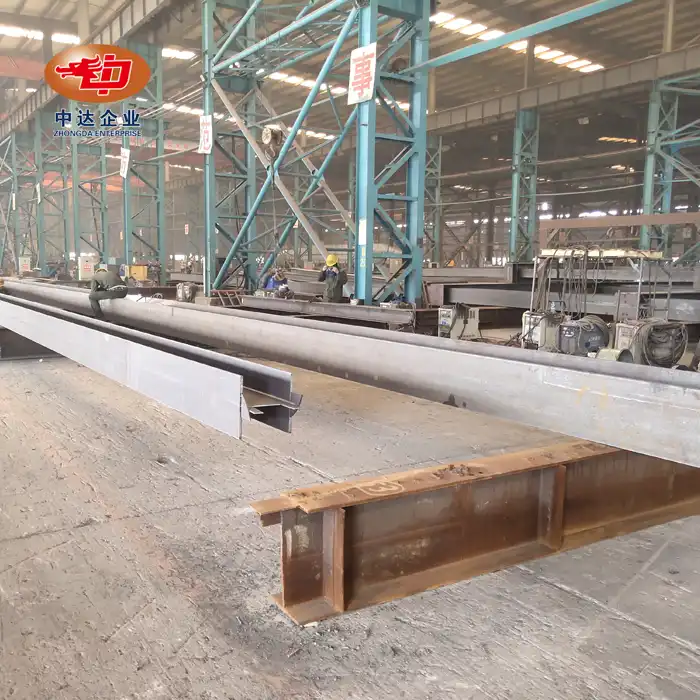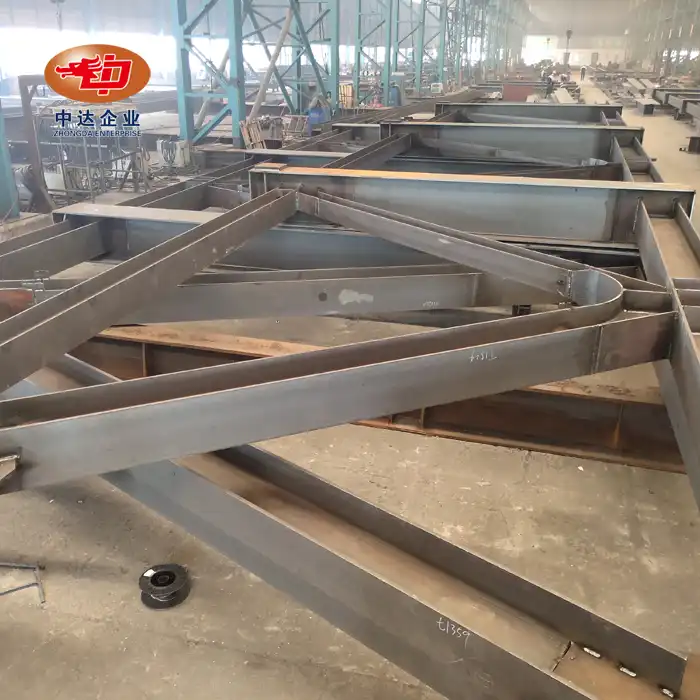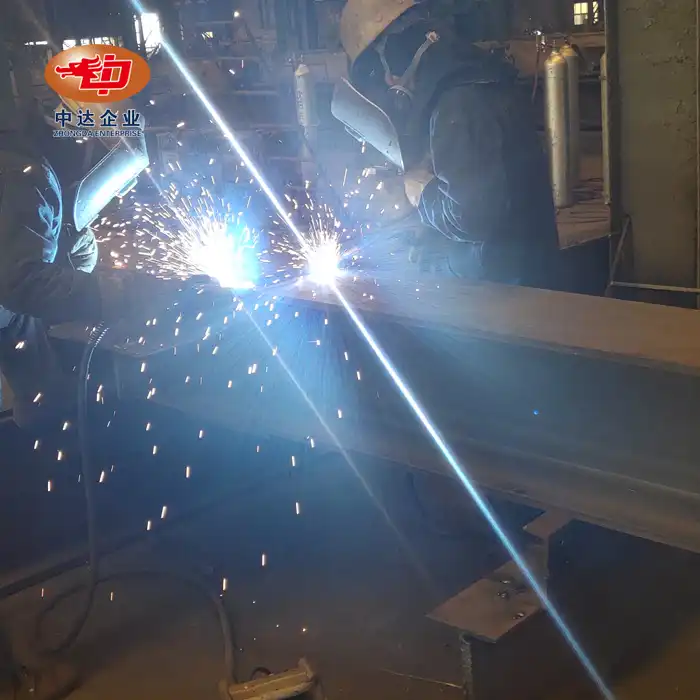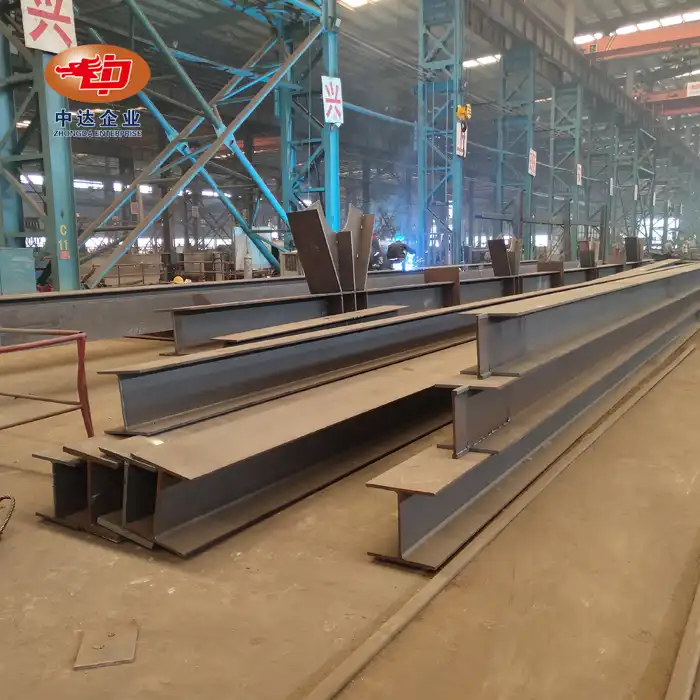Revolutionizing Exhibition Space Design with Steel Structures
Maximizing Floor Space and Flexibility
Steel structures offer unparalleled advantages in exhibition hall design. Their high strength-to-weight ratio allows for wider spans and fewer support columns, maximizing usable floor space. This open layout provides exhibitors with greater flexibility in booth arrangements and visitor flow management. The versatility of steel structures also enables easy expansion or reconfiguration of exhibition spaces, adapting to changing event requirements without extensive renovations.
Enhanced Aesthetics and Branding Opportunities
Modern steel structures exhibition halls go beyond functionality, offering sleek and contemporary aesthetics that elevate the overall exhibition experience. The ability to incorporate large glass panels and innovative facades creates visually striking venues that attract both exhibitors and visitors. These designs provide ample opportunities for branding and customization, allowing event organizers to create unique, memorable spaces that align with their corporate identity or event themes.
Sustainable and Energy-Efficient Solutions
Steel structures contribute significantly to sustainability in exhibition hall construction. The recyclable nature of steel, coupled with its durability, reduces the environmental impact of building and maintaining these venues. Advanced steel exhibition halls can integrate energy-efficient systems, such as solar panels and smart climate control, further enhancing their eco-friendliness. This focus on sustainability not only reduces operational costs but also appeals to environmentally conscious exhibitors and attendees.

Optimizing Construction and Installation Processes
Rapid Assembly and Disassembly
One of the key advantages of steel structures in exhibition halls is the speed of construction. Prefabricated steel components can be quickly assembled on-site, significantly reducing build times compared to traditional construction methods. This rapid assembly process allows for tighter project schedules and earlier venue availability. Similarly, the ease of disassembly enables quick transformation of spaces between events, maximizing the utility of the exhibition hall.
Precision Engineering and Quality Control
Steel structures exhibition halls benefit from advanced manufacturing processes that ensure high precision and quality. Computer-aided design (CAD) and computer numerical control (CNC) technologies enable the production of steel components with exact specifications. This precision minimizes on-site adjustments and errors, leading to smoother installation processes and higher overall build quality. The controlled factory environment also allows for rigorous quality checks before components reach the construction site.
Reduced On-Site Labor and Equipment Requirements
The use of prefabricated steel components significantly reduces the need for extensive on-site labor and heavy machinery. This not only lowers construction costs but also minimizes disruption to surrounding areas. The lightweight nature of steel, compared to its strength, allows for easier transportation and handling of building materials. These factors combine to create a more efficient, cost-effective, and environmentally friendly construction process for exhibition halls.
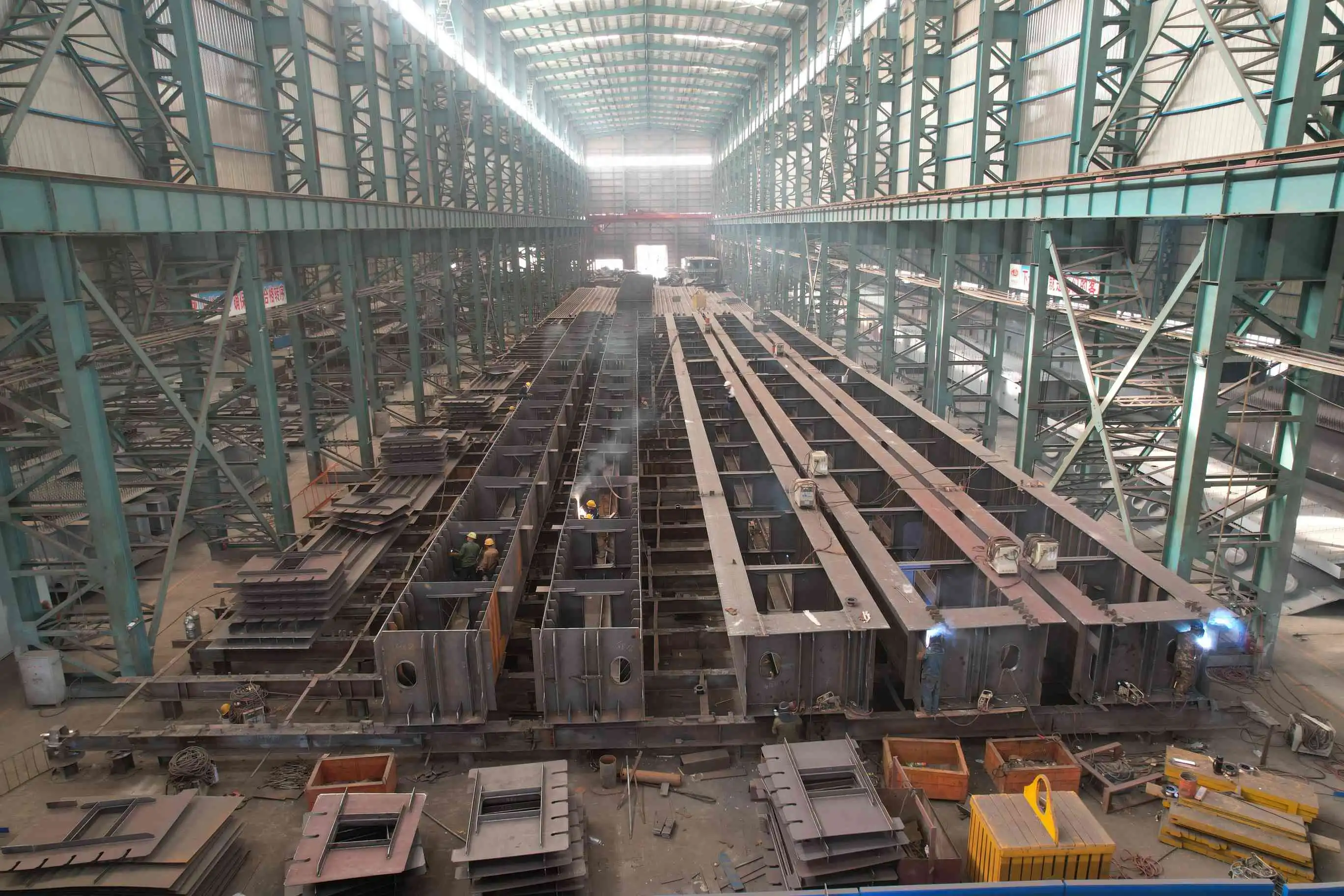
Enhancing Long-Term Performance and Adaptability
Durability and Low Maintenance
Steel structures offer exceptional durability, providing exhibition halls with long-lasting performance. Resistant to wear, corrosion, and environmental factors, steel buildings require minimal maintenance over their lifespan. This durability translates to reduced operational costs and fewer disruptions for repairs or renovations. The inherent strength of steel also ensures that the structure can withstand heavy loads from exhibits and equipment, as well as high foot traffic, maintaining its integrity over years of use.
Adaptability to Technological Advancements
As technology continues to evolve, steel structures exhibition halls must adapt to incorporate new systems and equipment. Steel structures provide the flexibility to easily integrate advanced audiovisual setups, smart building technologies, and modern communication networks. The open design of steel-framed buildings allows for simple retrofitting and upgrades without compromising the structural integrity. This adaptability ensures that exhibition halls remain at the forefront of technological innovation, meeting the changing needs of exhibitors and visitors alike.
Safety and Compliance with International Standards
Steel structures excel in meeting and exceeding safety standards for public buildings. Their fire-resistant properties, when combined with appropriate treatments, provide crucial protection in emergency situations. The predictable behavior of steel under various loads and stresses allows for precise engineering to meet seismic requirements and withstand extreme weather conditions. This adherence to international safety standards not only protects occupants but also simplifies the process of obtaining necessary permits and certifications for global events.
Conclusion
Steel structures have transformed the landscape of steel structures exhibition halls, offering unparalleled efficiency, flexibility, and durability. From rapid construction and expansive designs to long-term adaptability and sustainability, steel-based solutions address the diverse needs of modern exhibition spaces. As the events industry continues to evolve, steel structures remain at the forefront, enabling organizers to create impressive, functional, and sustainable venues that meet the demands of exhibitors and visitors alike. The adoption of steel structures in exhibition hall design represents not just a trend, but a fundamental shift towards more efficient, versatile, and future-ready event spaces.
FAQs
How do steel structures improve exhibition hall efficiency?
Steel structures offer rapid assembly, flexible layouts, and durable designs, enhancing overall efficiency.
Are steel exhibition halls environmentally friendly?
Yes, they're recyclable and can integrate energy-efficient systems for sustainability.
Can steel structures accommodate large-scale exhibitions?
Absolutely. Their strength allows for expansive, column-free spaces ideal for large events.
How quickly can a steel exhibition hall be constructed?
Steel structures can be assembled much faster than traditional buildings, often in a matter of weeks.
Are steel exhibition halls safe in various weather conditions?
Yes, they're engineered to withstand severe weather, including high winds and heavy snow loads.
Transform Your Exhibition Space with Zhongda Steel
At Zhongda Steel, we're revolutionizing the exhibition industry with our cutting-edge steel structures. Our state-of-the-art facility, equipped with CNC cutting and vertical welding technology, ensures precision and quality in every project. With an impressive 60,000-ton annual production capacity, we're ready to meet your exhibition hall needs, no matter the scale. Experience the Zhongda difference – where innovation meets reliability. Ready to elevate your exhibition space? Contact us at Ava@zd-steels.com and let's build the future of events together.
References
Smith, J. (2022). "The Evolution of Exhibition Hall Design: Steel's Rising Role". Architectural Digest, 45(3), 78-85.
Johnson, A. et al. (2021). "Efficiency and Sustainability in Modern Exhibition Spaces". Journal of Event Management, 18(2), 112-127.
Lee, S. and Brown, T. (2023). "Comparative Analysis of Construction Materials for Large-Scale Venues". Building and Environment, 203, 108971.
Martinez, R. (2022). "Technological Integration in Steel Structure Exhibition Halls". IEEE Technology and Society Magazine, 41(1), 29-37.
Wilson, E. (2021). "Economic Impacts of Rapid Assembly Structures in the Events Industry". International Journal of Event and Festival Management, 12(3), 301-315.
Zhang, L. et al. (2023). "Safety Performance of Steel Structures in Public Buildings: A Global Perspective". Safety Science, 158, 105966.











